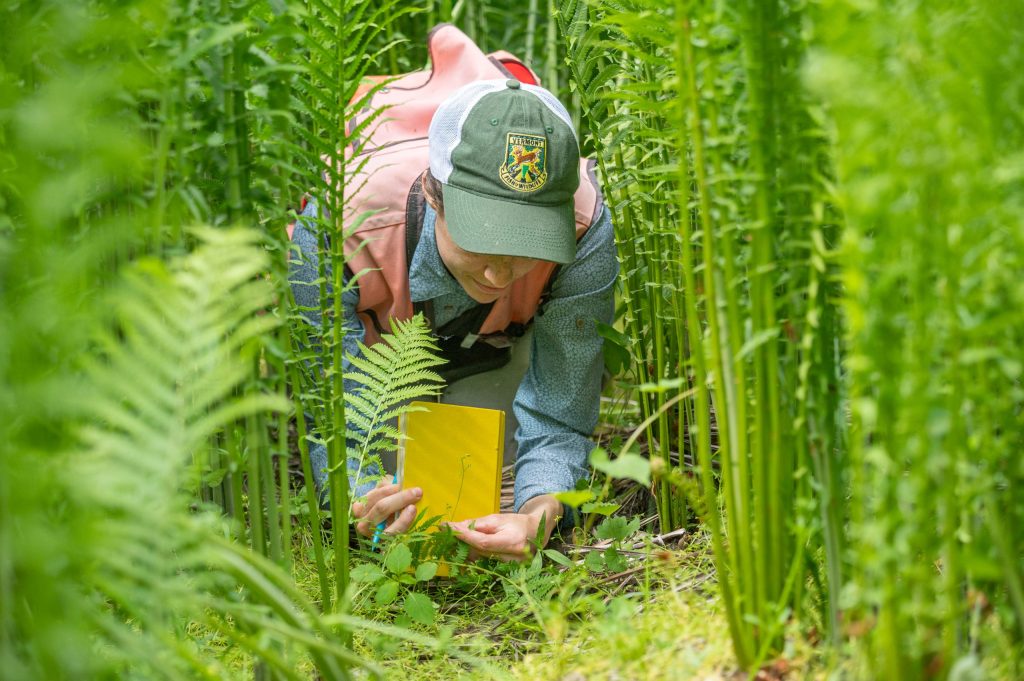Molly Parren had no intention of rediscovering a native plant believed to be extinct in Vermont for over a century. As a turtle technician with the state’s Fish and Wildlife Department, she had simply set out to survey habitats in Addison County.
But when Parren sent a picture of some rare wild garlic to Grace Glynn, a botanist with the department, she received an unexpected phone call. “You won’t believe what you’ve accidentally just found!” Glynn recalled telling Parren.
Peeking into the corner of the photograph was a stem of false mermaid-weed, or Floerkea proserpinacoides.
“I’d never actually seen the plant in real life,” Glynn said in an interview. “But…I immediately knew.” The herb has been missing from Vermont since the early 20th century; until last week, it was designated “state historical.” Now, experts want to make sure it stays here.
It’s the latest in a series of plant “rediscoveries” in recent years. The small whorled pogonia and the purple crowberry are among the missing species that have recently been brought to light in the state.
“I think it does speak to this kind of revitalized interest in native plants,” Glynn said. “It kind of takes a community to make all of these rediscoveries and that’s what we’re seeing.”
According to Art Gilman, a research botanist at the University of Vermont’s Pringle Herbarium, Floerkea is actually fairly common in the rest of North America. “It’s continent-wide at about this latitude,” he explained.
However, it hasn’t been spotted in Vermont since 1916, according to the Department of Fish and Wildlife. And, Gilman emphasized, the plant “adds a significant element to our biodiversity as a member of a family that does not have any other representatives in the state.”
Nevertheless, he added, the plant is theoretically well-suited to Vermont’s ecosystem as an early spring ephemeral. “It’s in that suite of species that are adapted…to the deciduous forest that has plenty of light earlier in the spring,” he said.
That’s an important point, according to Glynn.
“The bees that are first emerging,” she said, “the flies — they really need those early plants because nothing else is blooming.” Floerkea is also tasty for humans, though little is known about its consumption by animals.
But this early, short blooming period also makes Glynn’s job harder as she seeks to locate the rest of Vermont’s false mermaid-weed. “When the canopy closes over, it’s pretty much finished its business for the year,” said Gilman.
Botanists, professional or amateur, who wish to seek out more false mermaid-weed this season have a limited window of opportunity.
“Within a month or so,” Gilman said, “it will just be dried up and gone away…until next spring.”
Without the landowners’ care for the area, and their willingness to have it examined, even this population would have been left undiscovered. “I think one takeaway here is that private land ownership and biodiversity conservation can go hand in hand with responsible stewardship,” said Glynn.
She’s not just grateful to the landowners, though. “I want to give the plants credit,” she added. “They’ve been persisting without any help this entire time.”
Experts will continue to study the newly uncovered population, which is already larger than originally thought. Glynn said Thursday that the population is now known to extend both up and downstream of the initial site of discovery. (The department has declined to disclose the specific location).
It’s crucial to have a good sense of the plant’s spread and needs. “Ultimately,” she said, “we want to know how we can help this species flourish in Vermont in the future.”
“I think there’s something kind of wonderful,” she reflected, “about being humbled and being reminded…how little we know.”
A new and updated rare plant list will appear on the Fish and Wildlife Department website within the next few weeks.
Read the story on VTDigger here: Unearthed by accident: a plant lost to Vermont for a century is discovered in Addison County.

